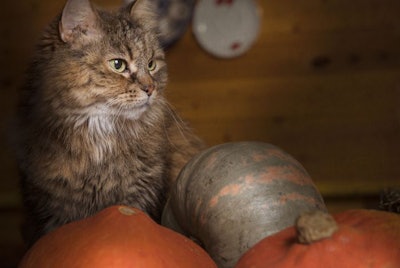
Sales of pet food with pumpkin flavors increased dramatically during the time Nielsen’s market analyst have been monitoring pumpkin’s popularity, reported Reuters. In the 52 weeks before July 29, 2017, sales of pumpkin pet foods hit US$14.9 million, up from only US$925,288 in that period of 2013.
Pet food with pumpkin as an ingredient posted 101 percent growth over last year and 193 percent from two years ago, according to Nielsen.
Some pet food companies have embraced the pumpkin trend to the extent of securing supplies from farmers they know personally.
Pet food companies ally with pumpkin farmers
Plato Pet Treats negotiated with a local farmer in California’s Central Valley to grow pumpkins specifically for the pet treat manufacturer.
“Not only does it give us something with a great story that it [the farm] is literally down the highway and grown in the same soil that we’re founded on,” Plato co-founder Aaron Merrell told Petfood Industry. “But it’s also going to be something that’s more efficient for us from a cost standpoint. Quality and efficiency combined with a great story, that’s a win-win for everybody.”
Another pet food company went beyond contracting farmers and founded their own farm. Canidae Pet Food established Canidae Farms in Cheney, Kansas, USA.
Clint Brauer, a third-generation Kansas farmer, manages Canidae Farms. Pumpkin is only one ingredient Brauer has grown for Canidae. He has also grown milo (sorghum), millet, peas, zuchini, butternut squash, parsley, sage, rosemary and tomatoes specifically for use as pet food ingredients.
Pumpkin in dry dog food
An analysis of the Dog and Cat Food Ingredient Center database explored the prevalence of pumpkin in pet foods. Pumpkin appears in nearly 20 percent of dry dog food recipes. For dry cat food, slightly more that 15 percent of recipes feature pumpkin.
From a cost standpoint, United States Department of Agriculture Economic Research Service Food Price Outlook data show that pumpkins have become more economical recently. Pie pumpkins, the small, dense variety mostly used as food ingredients, were all less expensive in September 2017 compared to a year earlier.

















